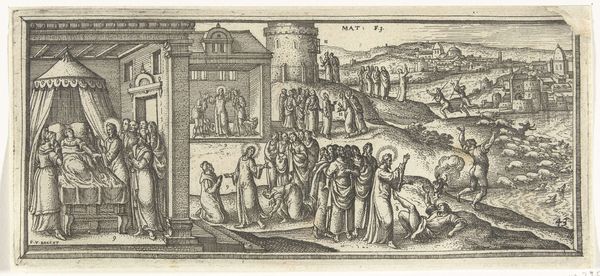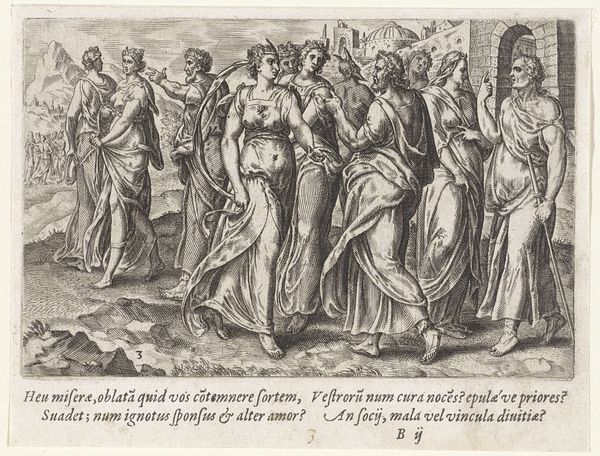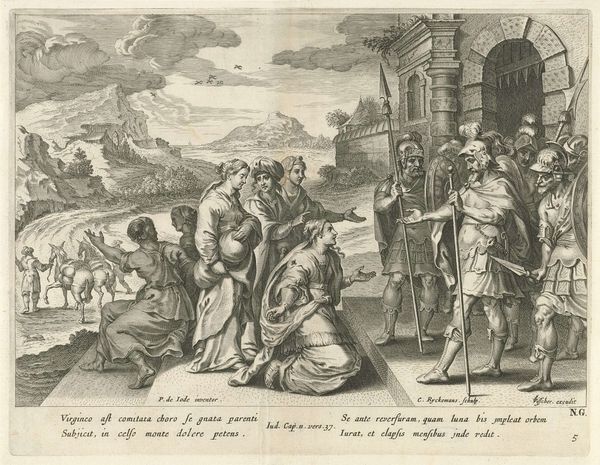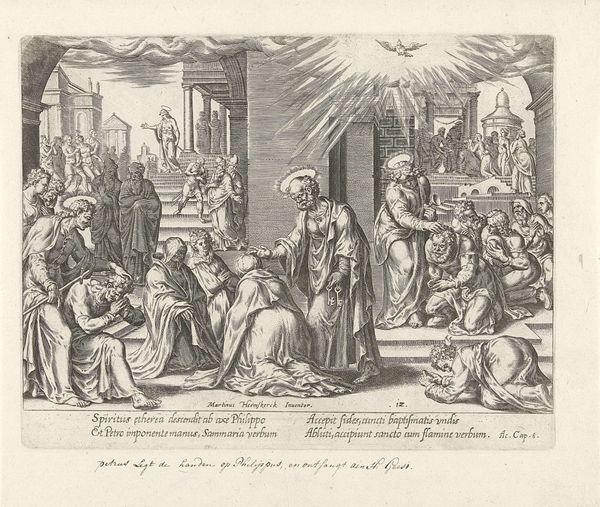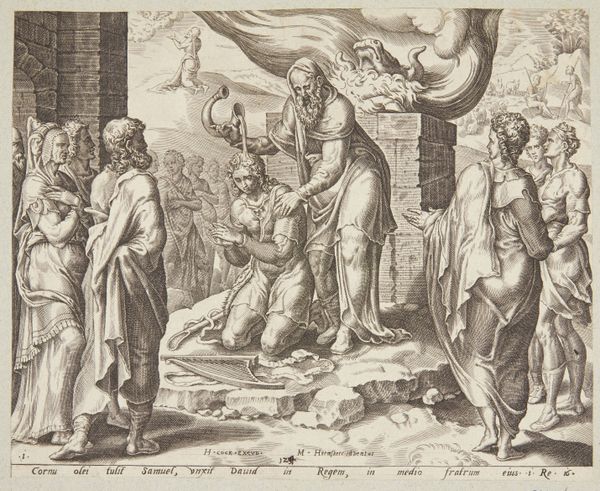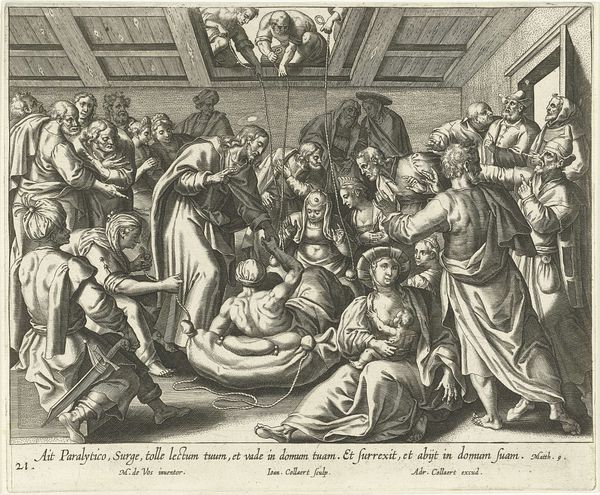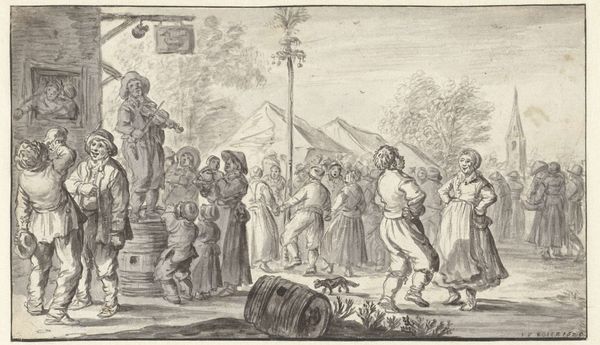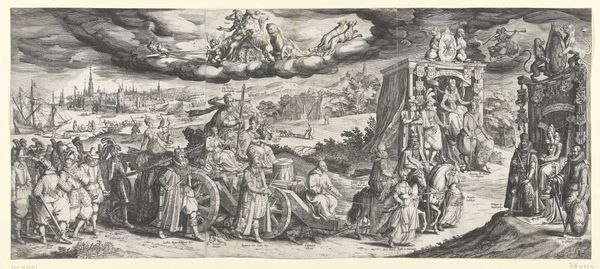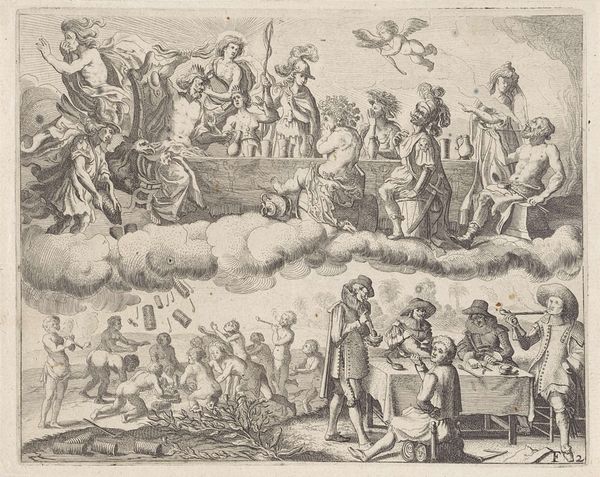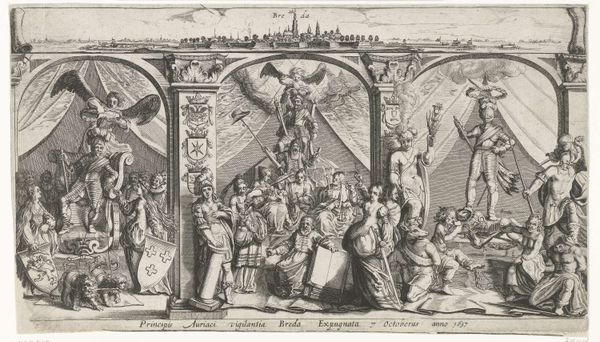
drawing, print, engraving
#
drawing
#
allegory
# print
#
pen sketch
#
perspective
#
figuration
#
11_renaissance
#
line
#
history-painting
#
northern-renaissance
#
engraving
Dimensions: height 209 mm, width 245 mm
Copyright: Rijks Museum: Open Domain
This engraving, made by Wierix around 1600, visualizes the biblical plea: "Lead us not into temptation." Note the figures below, their faces upturned, imploring the heavens. Their raised hands, a gesture as old as humanity itself, appear across cultures from ancient Egyptian art to Renaissance painting, signifying supplication, a reaching out to the divine. Consider the woman holding an ornate vessel – a symbol of worldly desires, perhaps? Beside her, a figure with bestial features whispers temptations. The juxtaposition brings to mind the pervasive motif of temptation, echoing in the story of Eve, Pandora's box, and countless other tales. It speaks to the human psyche's eternal struggle, where base instincts clash with spiritual aspirations. Observe how this struggle is rendered through the ages: from the subtle allure of a serpent in medieval art to the seductive gaze of a Baroque Venus. The emotional core remains constant – a universal battle between virtue and vice. These symbols, embedded deep in our collective memory, transcend time, resurfacing in ever-new forms.
Comments
No comments
Be the first to comment and join the conversation on the ultimate creative platform.
